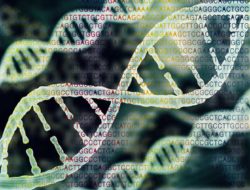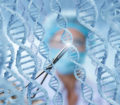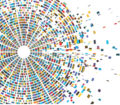Francis Crick shared the Nobel Prize in 1962 for discerning the structure of DNA. It was perhaps the most important biological discovery of the twentieth century. Crick then became fascinated with the nature of consciousness, and moved from England to La Jolla, to the Salk Institute. His granddaughter, Kindra Crick, interned at a neuroscience lab there during those early days on the Mesa. She’s now a cell biologist and artist who created the DNA sculpture What Mad Pursuit, which recently sold at an auction in support of the billion-dollar Francis Crick Institute in London.
After her freshman year at Princeton University, Crick stayed with her grandparents during her internship. Their home was in a cul-de-sac near the top of Mount Soledad, and most of the guests who came by were photographers, painters, or scientists. Crick recalls “lots of intellectual musings over leisurely lunches by the pool.” She ran experiments with DNA gels with Dr. Martyn Goulding, and played on the lab’s softball team. “There was good camaraderie, and the labs surrounding mine would get together for drinks on Fridays and barbecues on the weekends,” she says.
Crick returned to school and found a balance between studying molecular biology and her passion for art by developing visuals for campus theater. “Biology itself is a visual subject, rich with a tradition in observation and communication through art,” she says. “In my earliest paintings, I incorporated imagery from my observations under the microscope in the lab where I’d worked on [breast cancer genes] BRCA1 and BRCA2. Cancerous fibroblasts would envelop my canvas in layers.”






























